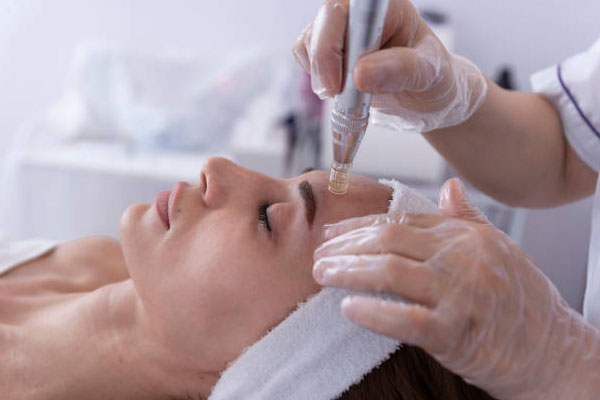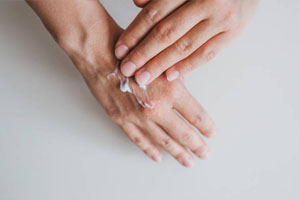Explore the ever-evolving world of beauty trends and discover whether the latest innovations are right for you From glass skin to eco-friendly beauty, find out which trends are worth incorporating into your routine for a refreshed and sustainable approach to self-care
Welcome to a captivating exploration of the ever-evolving world of beauty trends. Beauty trends have been a part of human culture for centuries, but in the modern age, they are evolving at an unprecedented pace. This guide delves into the historical roots of beauty trends and how they have shaped our perceptions of beauty. We'll also investigate some of the latest beauty trends, their impact on the beauty industry, and whether they are worth incorporating into your routine. Let's embark on a journey to discover the dynamic landscape of beauty and find out which trends are truly worth trying.

The Evolution of Beauty Trends
Historical Perspective on Beauty
Beauty trends have a rich and varied history that has evolved over the centuries. Understanding the historical context of beauty helps us appreciate how trends have shaped cultural perceptions. Here's a closer look at beauty trends through the ages:
Ancient Civilizations and Early Beauty Practices
In ancient civilizations like Egypt and Mesopotamia, beauty was highly prized. People used natural substances like honey, milk, and oils for skincare and adorned themselves with cosmetics made from minerals. These early beauty practices were not only about aesthetics but also had cultural and spiritual significance.
Renaissance and the Ideal of Pale Skin
During the Renaissance, pale skin was considered the epitome of beauty. Women went to great lengths to maintain a fair complexion, often using lead-based cosmetics, which had harmful health effects. This period also saw the emergence of elaborate hairstyles and ornate clothing, all contributing to the ideals of beauty at the time.
The Roaring Twenties and Flapper Style
The 1920s marked a dramatic shift in beauty trends, with the emergence of the "flapper" style. Women rebelled against the Victorian ideals and embraced shorter hairstyles, bold makeup, and a more androgynous look. This era was known for its liberated and carefree attitude toward beauty.
The Modern Era and the Influence of Media
In the modern era, mass media, including television, magazines, and social media, has had a profound impact on beauty trends. Icons like Marilyn Monroe, Twiggy, and modern influencers have shaped beauty ideals and inspired countless individuals to follow trends. The beauty industry has expanded to offer an array of products and services to meet changing demands.
The Revival of Natural Beauty and Sustainability
Recently, there has been a resurgence of interest in natural beauty and sustainability. Consumers are more conscious of the products they use and their environmental impact. This trend includes embracing natural and organic skincare and makeup products that promote health and sustainability.
Exploring the historical perspective on beauty allows us to see how beauty trends have evolved over time, reflecting societal values and ideals. It's a testament to the ever-changing nature of beauty and how it continues to adapt to cultural shifts and technological advancements.
Modern Beauty Trends
Modern beauty trends represent a dynamic and ever-evolving landscape that reflects changing societal values, technological advancements, and global influences. Here, we'll explore some of the most prominent modern beauty trends that have captured the imagination of beauty enthusiasts:
Skincare and the "Glass Skin" Trend
The pursuit of radiant, flawless skin is a hallmark of the "glass skin" trend. This trend places a strong emphasis on skincare routines that prioritize achieving a luminous complexion. It often involves a multi-step routine, including cleansing, exfoliating, moisturizing, and sunscreen application. Key elements are hydration, use of gentle acids, and the quest for a dewy, translucent look.
Natural and Sustainable Beauty
Modern consumers are increasingly concerned about the ingredients in their beauty products and the environmental impact of the beauty industry. The natural and sustainable beauty trend promotes the use of products made from organic and ethically sourced ingredients. Brands committed to sustainability are gaining popularity, and there's a growing interest in reducing waste and choosing eco-friendly packaging.
Makeup and Bold Lip Colors
In the realm of makeup, bold lip colors have made a significant comeback. Vibrant shades of red, deep purples, and unconventional hues are being embraced, allowing individuals to make a statement with their lip color. This trend celebrates self-expression through bold, striking lip shades, often paired with minimal or natural makeup for balance.
Inclusivity and Diversity
One of the most remarkable trends in modern beauty is the push for inclusivity and diversity. There's a growing acknowledgment that beauty comes in all colors, shapes, and sizes. Brands are expanding their shade ranges to cater to a wider spectrum of skin tones, and diversity in advertising campaigns is increasingly celebrated.
Technology and Virtual Beauty
The integration of technology into beauty is another hallmark of modern trends. Augmented reality (AR) and virtual makeup try-on apps allow consumers to experiment with different looks before making a purchase. Additionally, skincare tech, such as smart devices for personalized routines, is gaining popularity, offering a unique approach to beauty maintenance.
Modern beauty trends are a reflection of a changing world, embracing diversity, sustainability, and innovation. These trends offer a wide array of choices for individuals to express themselves and adapt their beauty routines to their unique preferences and values.
Popular Current Beauty Trends
Skincare and "Glass Skin" Trend
The "glass skin" trend is a modern phenomenon that has gained substantial popularity in the world of beauty and skincare. It revolves around achieving a complexion that is not just flawless but also translucent and radiant. Here's a closer look at the key elements of this trend:
Multi-Step Skincare Routines
The "glass skin" trend places great importance on multi-step skincare routines. These routines often involve meticulous cleansing, exfoliation, moisturizing, and sun protection. Cleansing is a crucial first step, ensuring that the skin is free from impurities. Exfoliation, using gentle exfoliants, helps in removing dead skin cells for a smoother texture. Moisturizing is essential for maintaining hydration, while sunscreen application is non-negotiable for sun protection.
Hydration Is the Essence
Central to the "glass skin" trend is the concept of deep hydration. Achieving that dewy, translucent look hinges on the skin being well-moisturized. Products containing hydrating ingredients like hyaluronic acid and glycerin are often featured in these routines. Hydrating serums and moisturizers help in plumping the skin and maintaining a youthful appearance.
Use of Gentle Acids
Exfoliation is a key element of the "glass skin" routine, and this often involves the use of gentle chemical exfoliants. Alpha hydroxy acids (AHAs) and beta hydroxy acids (BHAs) are commonly used to promote skin cell turnover. These acids help in achieving smoother, brighter, and more even-toned skin without the harshness of physical exfoliation.
The Quest for a Dewy, Translucent Look
Ultimately, the "glass skin" trend is characterized by the quest for a complexion that appears translucent and dewy. Achieving this look involves a combination of the above steps, emphasizing hydration, gentle exfoliation, and meticulous skincare. Makeup is often kept minimal to let the skin's natural radiance shine through.
Customization for Individual Skin Types
It's important to note that the "glass skin" trend can be customized to suit individual skin types and needs. Not all routines will look the same, as skincare should always be tailored to the unique characteristics of your skin. Consulting with a dermatologist or skincare professional can help you create a routine that best suits you.
The "glass skin" trend represents a contemporary take on achieving radiant and flawless skin through meticulous skincare routines. Its focus on hydration, gentle exfoliation, and a translucent complexion makes it an intriguing choice for those looking to embrace modern beauty trends.
Natural and Sustainable Beauty
The rise of natural and sustainable beauty represents a significant shift in the beauty industry, driven by consumer demand for products that prioritize health, ethical sourcing, and environmental responsibility. Here's a closer look at this transformative trend:
Embracing Clean and Green Ingredients
Natural and sustainable beauty places a strong emphasis on the use of clean and green ingredients. This trend encourages brands to formulate products with ingredients that are ethically sourced, free from harmful chemicals, and kind to the environment. Common ingredients include botanical extracts, organic oils, and eco-friendly preservatives.
Ethical Sourcing and Fair Trade Practices
Brands following the natural and sustainable beauty trend often commit to ethical sourcing and fair trade practices. This means they work with local communities, pay fair wages, and ensure that sourcing practices are environmentally friendly. Consumers appreciate knowing that their products have a positive social impact.
Reducing Environmental Impact
Environmental responsibility is at the core of this trend. Brands aim to reduce their environmental footprint by using recyclable packaging, minimizing waste, and adopting sustainable production processes. Some brands even offer refillable options to reduce packaging waste.
Cruelty-Free and Vegan Products
Natural and sustainable beauty aligns with cruelty-free and vegan principles. Many products are certified as not tested on animals, and they do not contain any animal-derived ingredients. This approach respects animal rights and appeals to conscious consumers.
Holistic Approach to Beauty
Natural and sustainable beauty takes a holistic approach to beauty. It's not just about what you put on your skin but also about overall wellness. Brands may offer products that promote both inner and outer beauty, such as supplements and skincare that work in harmony with a healthy lifestyle.
The natural and sustainable beauty trend reflects a growing awareness of the impact of beauty products on our health and the environment. It empowers consumers to make choices that are not only beneficial for their well-being but also for the planet, promoting a more ethical and eco-conscious approach to beauty.
Makeup and Bold Lip Colors
Makeup trends are ever-evolving, and one trend that has made a striking comeback is the use of bold lip colors. This trend celebrates self-expression and adds a pop of vibrancy to makeup routines. Let's delve into the world of bold lip colors and their significance in modern makeup:
Reviving Classic Shades
One aspect of the bold lip color trend is the revival of classic shades. Red lips, deep purples, and vivid pinks have returned to the forefront of makeup looks. These timeless shades offer a sense of nostalgia while still feeling fresh and modern.
Experimentation with Unconventional Hues
Modern makeup enthusiasts are not limited to traditional lip colors. The trend encourages experimentation with unconventional hues, including blues, greens, and metallic shades. This allows for greater creativity and self-expression in makeup routines.
Balance with Minimal Makeup
Another striking feature of this trend is the balance it creates. While lips take center stage with bold colors, the rest of the makeup is often kept minimal. Subtle eye makeup and a natural complexion provide a harmonious contrast that emphasizes the bold lip even more.
Matte and Long-Lasting Formulas
To ensure the longevity of bold lip colors, matte and long-lasting formulas have gained popularity. Matte lipsticks provide a velvety finish and stay put for extended periods. This is especially practical for individuals who want their lip color to last throughout the day.
Versatility for Different Occasions
Bold lip colors are versatile and can be adapted for various occasions. While deep reds are ideal for formal events, bright pinks and oranges are perfect for fun and casual outings. The versatility of this trend makes it accessible for a range of makeup preferences.
The resurgence of bold lip colors in modern makeup signifies a celebration of individuality and creativity. Whether it's the revival of classics, experimentation with unconventional hues, or achieving balance with minimal makeup, this trend offers a spectrum of options for self-expression and making a bold statement.
The Pros and Cons of Following Trends
Benefits of Embracing Trends
Embracing beauty trends can be an exciting and rewarding experience. While trends come and go, there are several benefits to staying open to the latest innovations and ideas in the world of beauty:
1. Staying Relevant and Current
By incorporating current beauty trends into your routine, you stay relevant and up-to-date with the ever-evolving beauty landscape. This ensures that your style remains fresh and in sync with contemporary beauty standards.
2. Experimentation and Self-Expression
Beauty trends offer opportunities for experimentation and self-expression. Trying new products, techniques, and styles can be an enjoyable way to discover what resonates with you and express your unique personality through your appearance.
3. Boosting Confidence
Exploring and embracing trends can boost your confidence. When you feel good about your appearance and are in sync with current beauty standards, it can positively impact your self-esteem and how you present yourself to the world.
4. Adapting to Changing Needs
Your skincare and beauty needs change over time due to factors like age, climate, and lifestyle. Embracing trends allows you to adapt your routines to these changing needs, ensuring that you're addressing your skin's evolving requirements.
5. Discovering Innovative Products
Many beauty trends introduce innovative products and formulations. Embracing these trends can lead you to discover groundbreaking skincare and makeup items that offer new and improved ways to care for your skin and enhance your appearance.
6. Connecting with a Community
Beauty trends often create a sense of community. Sharing your experiences and tips with like-minded individuals who follow the same trends can be a rewarding way to connect and build relationships with others who share your interests.
7. Celebrating Diversity
Beauty trends are increasingly celebrating diversity and inclusivity. By embracing these trends, you participate in the celebration of diverse beauty standards and help challenge narrow and exclusive definitions of beauty.
Embracing beauty trends goes beyond following the crowd; it can be a source of personal growth, self-confidence, and connection with a broader community. By staying open to the latest trends, you can enjoy these benefits and continue to evolve your beauty routines in exciting ways.
Potential Drawbacks and Considerations
While embracing beauty trends can be exciting, it's important to consider potential drawbacks and exercise caution to ensure that your beauty routine remains both safe and enjoyable. Here are some factors to keep in mind:
1. Skin Sensitivity and Allergies
Some trendy ingredients or products may not be suitable for all skin types. If you have sensitive skin or known allergies, it's crucial to perform patch tests and consult with a dermatologist before trying new products to avoid adverse reactions.
2. Overuse and Skin Barrier Damage
Excessive use of certain skincare products, especially those with active ingredients like acids, can compromise your skin's barrier. Overexfoliation or overuse of strong formulas can lead to redness, dryness, and sensitivity. It's essential to follow product instructions and not overdo it.
3. Budget Considerations
Following trends might entail purchasing new products or tools, and this can impact your budget. It's wise to set a beauty budget and make informed choices to ensure that you're investing in products that genuinely align with your goals and preferences.
4. Inconsistent Results
Not all beauty trends will deliver consistent results for everyone. What works well for one person may not work for another. It's essential to be patient and realistic about the outcomes of trend-driven products and routines.
5. Environmental Impact
Some beauty trends, especially those centered on single-use or disposable items, can have a negative environmental impact. Consider the sustainability of the products you choose and look for eco-friendly alternatives to reduce your ecological footprint.
6. Changing Priorities
Overemphasis on trends may lead to frequently changing your beauty routines. While this can be exciting, it's also essential to maintain consistency in certain aspects of your skincare to address long-term goals and concerns.
7. Peer Pressure
Social media and peer pressure can sometimes drive individuals to follow trends they may not truly resonate with. It's important to make choices based on your unique preferences and needs, rather than solely adhering to popular trends.
By acknowledging potential drawbacks and being mindful of these considerations, you can navigate the world of beauty trends with greater confidence and ensure that your beauty routine remains enjoyable, effective, and in line with your individual preferences and requirements.
FAQs (Frequently Asked Questions)
Q1: Are beauty trends suitable for all skin types?
A1: Beauty trends vary, and not all trends are suitable for every skin type. It's essential to consider your skin's unique characteristics, such as sensitivity, dryness, or oiliness, when exploring beauty trends. Consult with a dermatologist or skincare professional to determine which trends are safe and beneficial for your specific skin type.
Q2: How can I determine which trends are safe for my skin?
A2: To determine which beauty trends are safe for your skin, start by researching the products and ingredients associated with the trend. Look for reviews and consult with experts to understand potential risks or benefits. Performing patch tests before using new products can help you identify any adverse reactions. Remember that your skin's needs may change over time, so adapt your routine accordingly.
Q3: Do beauty trends have long-term effects on skin health?
A3: The long-term effects of beauty trends on skin health can vary. Some trends, such as those promoting clean and sustainable beauty, can contribute positively to skin health and overall well-being. However, trends that involve harsh or excessive practices may have adverse effects over time. It's crucial to balance trendy routines with timeless skincare principles to maintain long-term skin health.
Q4: What should I do if a beauty trend causes skin irritation or allergies?
A4: If you experience skin irritation or allergies due to a beauty trend, stop using the product immediately. Rinse your skin with water and apply a soothing, hypoallergenic moisturizer. If the irritation persists or is severe, consult with a dermatologist for guidance on treating the condition. To avoid such issues, consider patch testing new products and being cautious with trendy ingredients, especially if you have sensitive skin.
Q5: How can I balance embracing beauty trends with a sustainable and eco-friendly approach?
A5: Balancing beauty trends with sustainability is possible. Look for brands that prioritize eco-friendly packaging, ethical sourcing, and cruelty-free practices. Additionally, choose products with clean, natural ingredients that align with your values. Reducing waste and opting for refillable options can also contribute to a more sustainable beauty routine, allowing you to embrace trends while minimizing your environmental impact.








